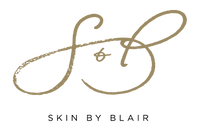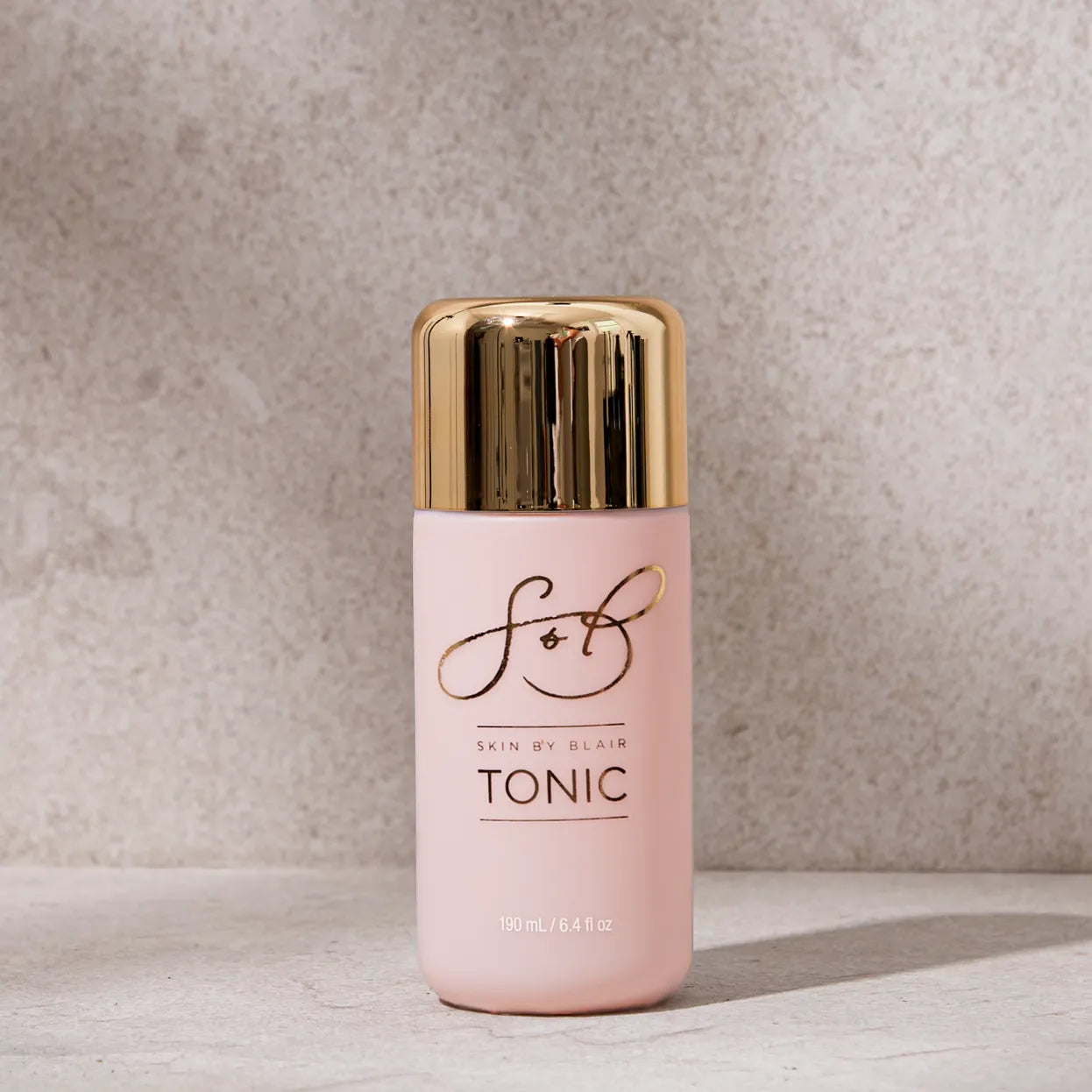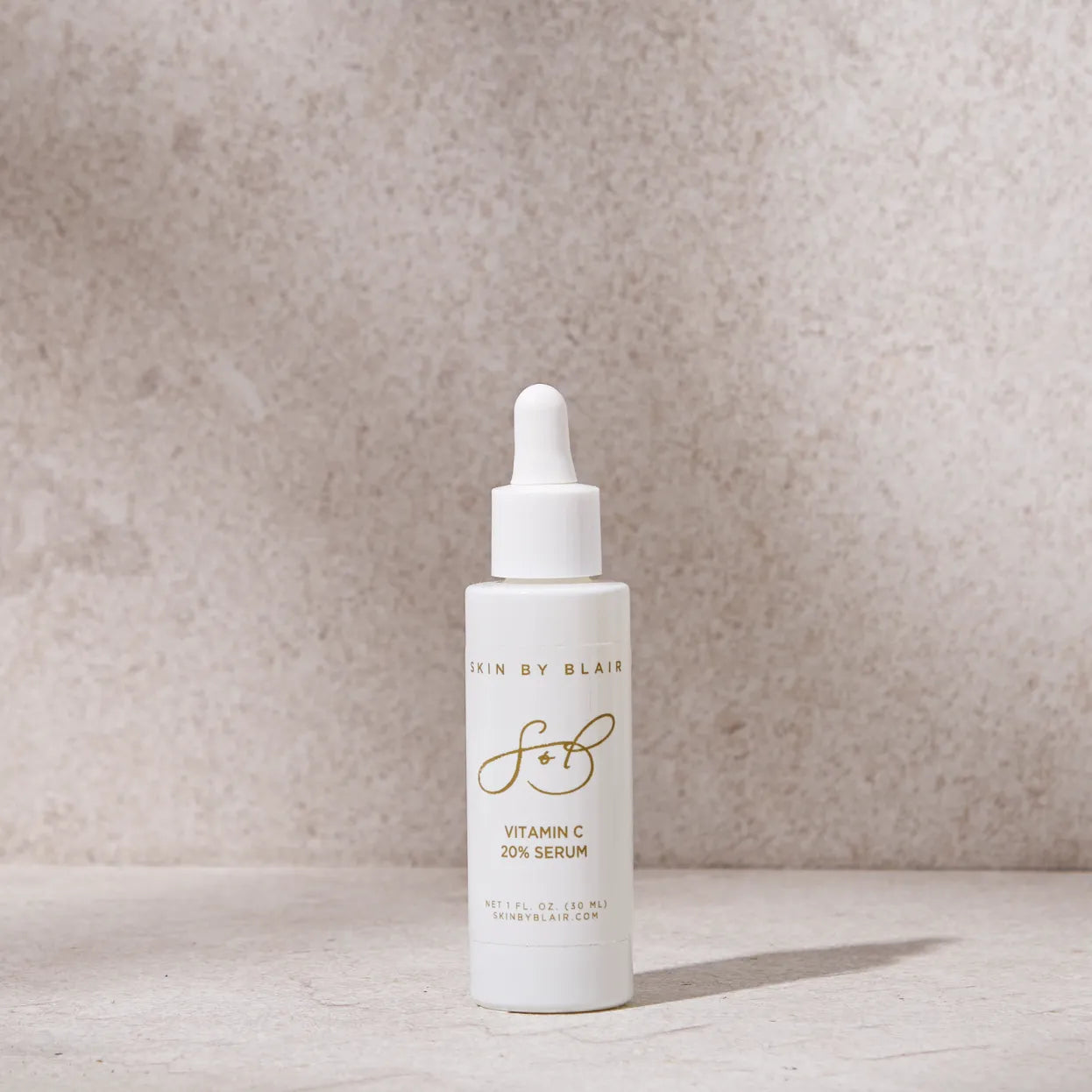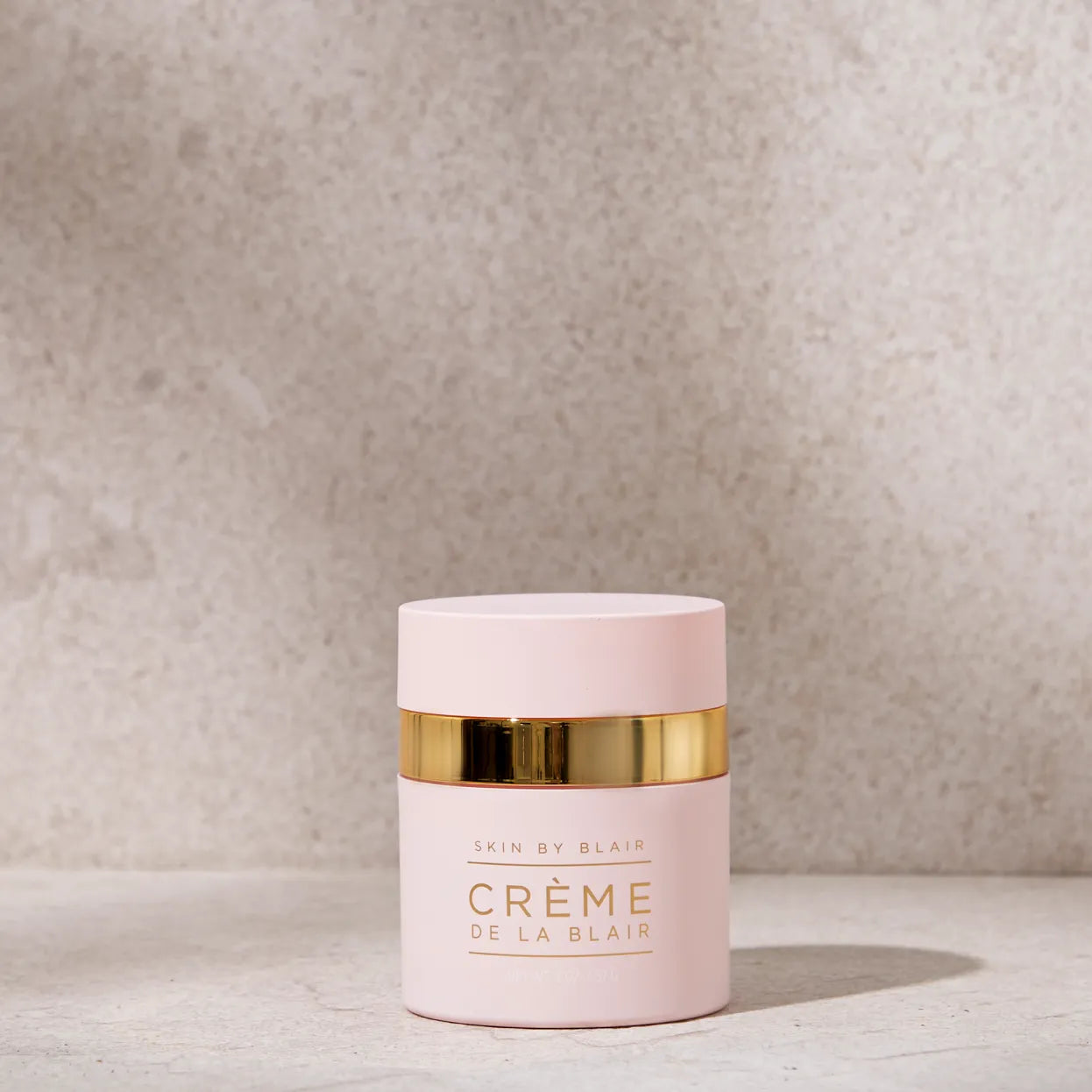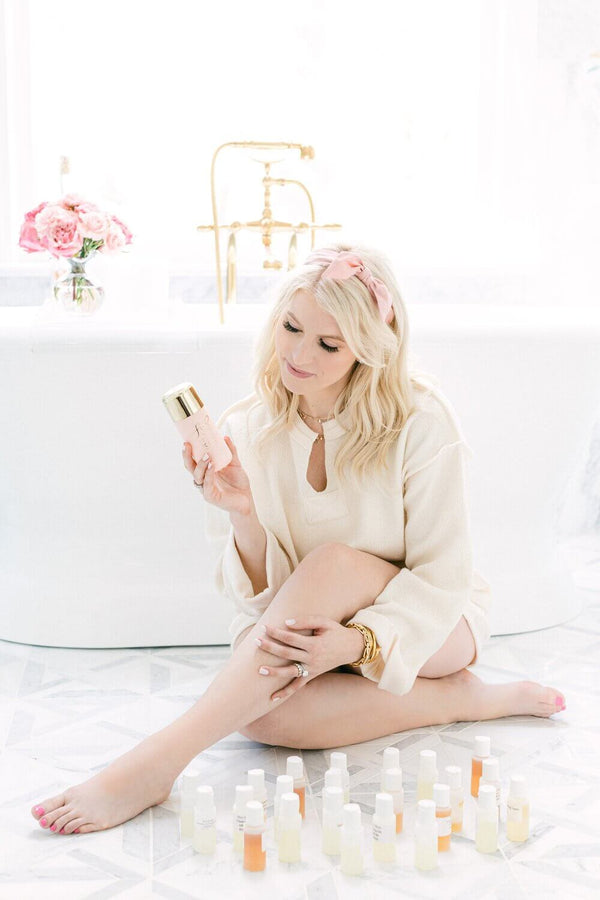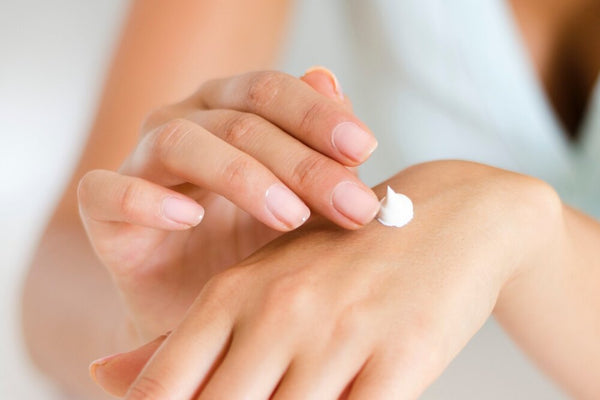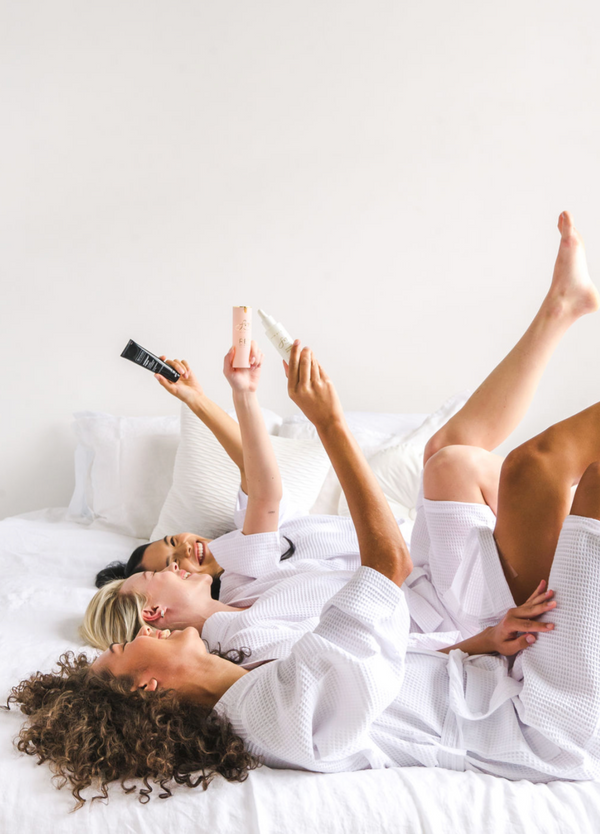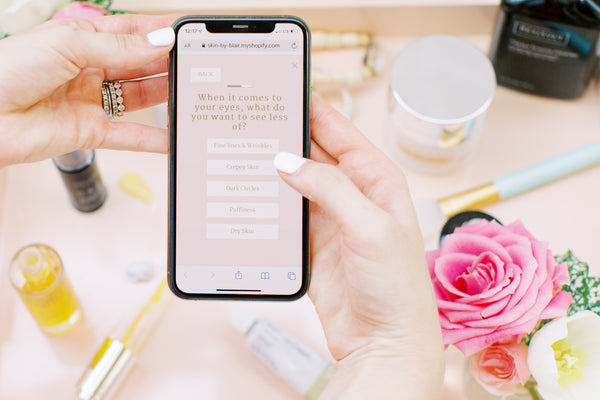Why I Don't Like Retinol, And What To Use Instead
Retinol, retinoid, retin-A, tretinoin - you've heard of them as the holy grail of anti-aging, but are probably confused as to what the difference is between them (trust me, you're not alone!). "Retinoid" is an umbrella term - it refers to anything in the Vitamin A family. Retinoids come in many different forms and strengths. To make this simple, refer to the graphic and keep in mind the lower the strength, the less collagen stimulation. The higher the strength, the more collagen stimulation (more collagen = less fine lines and wrinkles).

First, let's dive into the different types of retinoids
There are many different types of retinoids — retinol is just one of them. Each one is of different strength and comes with its own set of pros and cons. What they all have in common is that they’re derived from vitamin A and they convert to retinoic acid in the skin. From there, they increase cell thickness, affect gene expression, encourage skin resurfacing, and increase collagen production.
When it comes to retinoids, it's important to look at 2 things: the product's strength (aka how effective it will be) and irritation level. Here is a simple breakdown of what that the comparison looks like across different retinoids:

So, why don't I like retinol?
So why don't I like retinol? Because retinol is the lowest strength retinoid, but causes more skin irritation than a higher strength retinoid - so why would anyone use a less effective + more irritating product when you could use a MORE effective product with LESS skin irritation (aka: retinaldehyde)!?
Retinal works up to 11x faster than a traditional retinol because of the one-step conversion to retinoic acid, vs the two-step conversion required for retinol. This means that you'll see quicker, more noticable results using a retinal than a retinol. This also means that the purging period will be prolonged with retinol because the process to cell turnover is longer. With retinal, if any purging occurs, it will be a shorter period to address clogged pores and renewing the skin.
Plus, since retinol causes more irritation than other retinoids, many skin types see irritation from using it. If you've ever tried retinol and noticed drying, flaking, shedding, redness, and irritation, you've seen it first hand! If you haven't tried retinol because you weren't sure to where to start, we're here to help you and skip the retinol trial and error phase!

Introducing RET+, an all-in-one power product
If you've been around for a while, you know about Ret de la Blair, the retinaldehyde we released in 2021. It sold out within days of releasing because y'all loved it so much, and everyone has been so eager for it to come back!
After a year-long hiatus due to supply chain challenges, we turned the delay into an opportunity to create a more powerful, more potent, and more multi-tasking product that could also streamline your skincare routine.
Our enhanced formula, RET+, contains our beloved Ret, plus the combination of bakuchiol, THD Ascorbate, palmitoyl tetrapeptide-72, niacinamide, resveratrol, hyaluronic acid, and a probiotic.
It delivers 0.12% retinaldehyde — & up to 20x more effective than retinol, works up to 11x faster, and has significantly less irritation than traditional retinol products.
The Science Behind RET+ Ingredients
Retinaldehyde
Ahh, the workhorse of RET+. It typically comes in concentrations of 0.05% (most common) up to 0.1% — the higher the concentration, the more results. RET+ delivers 0.12% retinal.
Retinaldehyde supports healthy skin cell regeneration which promotes plumper and firmer-looking skin where the appearance of fine lines is visibly reduced.
It works up to 20x more effective than retinol, and working up to 11x faster, with significantly less irritation than traditional retinol products.
Bakuchiol
Bakuchiol is a retinoid-alternative because it has a very similar gene expression to retinoids, (meaning it stimulates collagen and elastin to encourage anti-aging benefits), and also has calming and stabilizing properties that actually allow the skin to more easily tolerate retinoids.
It’s no secret that I love Bakuchiol - I love it so much that I made a product, SBB Bakuchiol, centered around it, and have always recommended pairing it with your retinoid for maximum results. Bakuchiol boosts a retinoid’s effectiveness by up to 20X, making these two products one of the most powerful anti-aging solutions — but with my mission to simplify your routine, why not combine Ret de la Blair and SBB Bakuchiol into one product. So I did exactly that.
Bakuchiol stimulates collagen production, helps produce elastin, firms skin, improves skin tone and texture, and minimizes hyperpigmentation.
THD Abscorbate
Acting as a stable form of Vitamin C, this ingredient protects against free radicals, brightens skin, improves dark spots, and aids in collagen production.
While it’s essential to use vitmain C every morning, it is often considered less beneficial in your evening routine. However, recent data shows that UV damage continues for many hours after sun exposure, and thus the benefit of using vitamin C at night is more substantial than weoriginally believed. But that just sounds like one more product to add to our routines, right? Wrong — because my mission is to simplify your routine. So of course I packed it into RET+!
Palmitoyl tetrapeptide-72
An anti-aging peptide that supports skin’s firmness and elasticity by strengthening its structure, contributing to visibly reducing wrinkles and firmer skin.
I like to think of this peptides as a foundational peptide that provides the structural framework for skin to look firmer and overall more youthful. Because retinoids play a such a key role in collagen and elastin production, this peptide was a no brainer as the perfect pairing to provide foundational support to the skin.
Niacinamide
Niacinamide, a form of Vitamin B3, is an essential vitamin and a must-have multi-functional ingredient that addresses a diverse range of skin concerns.
I try to incorporate niacinamide into our products any chance I get because, quite frankly, what doesn’t it do?
It helps with redness, dark spots, hydration, acne, inflammation, wrinkles, rosacea, pore size, + more! It was a must for RET+!
Resveratrol
Resveratrol is a powerful natural antioxidant found in many berries and the skin of red grapes (& is the reason why you’ll hear people say red wine is good for you!).
I fell in love with reservatrol about 10 years ago when I saw first hand how much it improved skin redness. Since retinoids, when used incorrectly, can disrupt the skin barrier and cause redness & inflammation, resveratrol’s anti-inflammatory properties, antioxidant protection, and strengthened skin barrier effects, this much less of a concern. I knew it needed to be included in RET+.
Hyaluronic acid
Hyaluronic acid (HA) is a highly effective moisturizing ingredient, holding up to 1,000 times its weight in water.
Since retinoids can make the skin more dry in some cases, I chose to include HA to ensure the skin remained hydrated and plump no matter the season.
Probiotic
Probiotics are used in skincare to support and maintain a balanced skin microbiome which plays a crucial role in maintaining the skin's barrier function and protecting against harmful pathogens.
Probiotics contribute to the skin's natural healing processes, support the repair of the skin barrier, and aid in the recovery of damaged or compromised skin — all of which are so helpful when using a retinoid.

How to incorporate RET+ in your routine
Since RET+ is great for sensitive and reactive skin types, it is safe to use RET+ every evening. However, if you prefer to ease into it and get your skin acclimated to it, you can start using it 2-3x a week at the beginning. Once you feel your skin is up for it, you can start layering it in your routine every night.
This will be the order you apply RET+ with your other products in the PM:
1. Cleanse
2. Tonic
3. Serums
4. Eye Cream
5. RET+
6. Moisturizer
